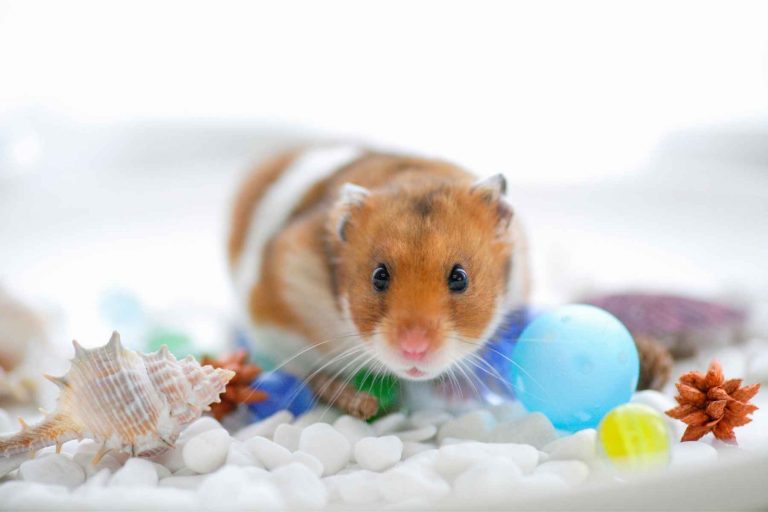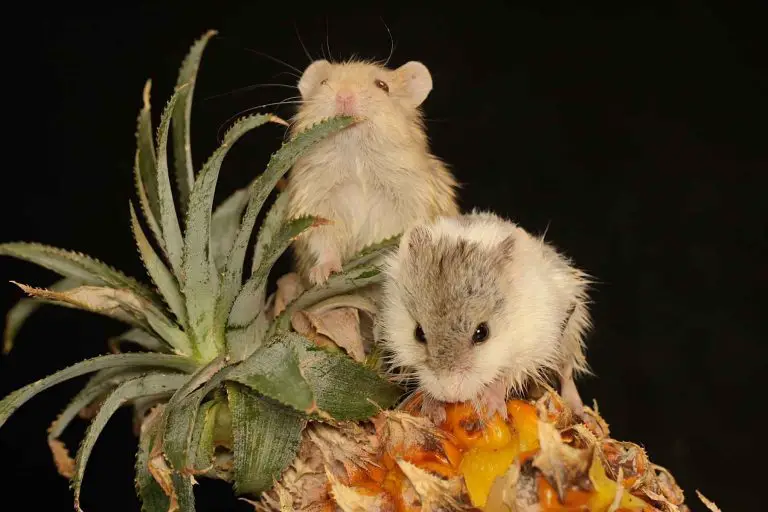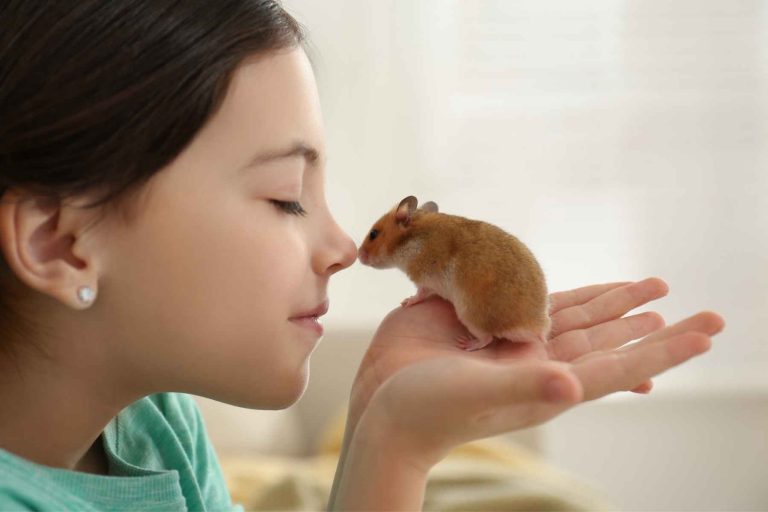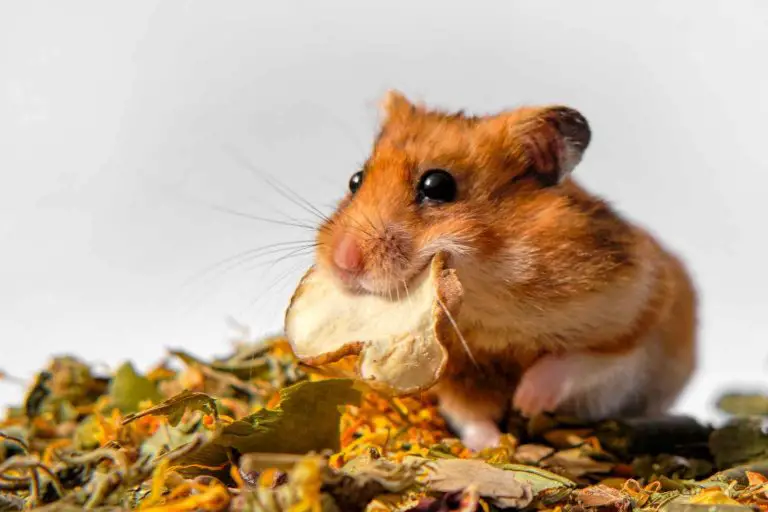How Smart Are Hamsters?

When people talk about intelligent animals, most think of large critters like dogs and horses. But as it turns out, the tiny (and adorable) hamster is more clever than you might realize.
Hamsters are relatively intelligent animals known for their superb spatial awareness and keen perception. In addition to recognizing objects and sounds, these critters can also learn simple routines. However, it’s believed that hamsters are generally less bright than other similar-sized rodents.
Animal intelligence is tricky to measure because it can come in many different forms. So to help clear things up, this article explains how hamsters show off their smarts.
What Makes Hamsters Smart
Part of what makes hamsters excellent pets is their unique intelligence. Beyond their excellent spatial awareness, they also have hypersensitive perception—especially concerning smells and sound.
This hypersensitivity allows them to detect even the faintest scents. As a result, they’re talented at finding food sources even if they’re far away or concealed.
A game many owners like to play is hiding treats for their rodents to find. The hamster’s acute senses guide them, while their problem-solving skills help overcome obstacles.
You can also place hamsters in a maze with food scattered around. In addition to quickly finding the treats, they’ll easily navigate their way out.
Furthermore, hamsters display impressive abilities of recognition.
One adorable way they show this is by coming when called by their name. And they can likewise learn what specific objects or sounds mean.
Do Hamsters Have Good Memory?
You’d be forgiven for thinking such a tiny creature would have a lackluster memory.
However, hamsters possess relatively strong recollection skills. And they can even repeat learned routines after not doing them for several months.
Here are some of the key ways they demonstrate their impressive memory:
- Recollecting the layout of objects in their environment
- Recognizing familiar things, sounds, and smells
- Remembering where to find food and water
- Quickly navigating areas they’ve previously explored
As you can see, hamsters are pretty bright.
Their memory in regards to spatial awareness is particularly remarkable.
For example, they’ve been observed navigating back to their enclosure after being carried to a different place.
Even more fascinating? One study showed that they memorize areas mostly by scent, not sight.
This cleverness is why the critters are famous for being escape artists; because hamsters can remember how to open their cages and the routes out of rooms.
Can Hamsters Learn Tricks?
Want to teach your furry little friend how to show off their smarts? Then you’re in luck—because hamsters are clever enough to learn several tricks.
Some of the basics include teaching them to jump through hoops and to stand. Although, they can master more complex tasks with enough training and treats.
But before trying to teach them, it’s crucial to understand a few critical points:
- Bonding is crucial: your hamster will be much more receptive to learning if it feels comfortable with you. Aim to spend a half-hour with your critter daily, assuming your hamster tolerates it.
- Lack of obedience: unlike dogs, these rodents aren’t naturally loyal to humans. As a result, training requires more patience (and treats).
- Avoid stress: if your rodent is anxious during training, don’t keep pushing them. Stress can cause hamsters to feel uncomfortable around you and make picking up tricks more challenging.
Teaching Hamsters Tricks
The best way to teach a hamster a trick is through positive reinforcement. In other words, giving them a little treat after they do a task will encourage them to repeat that behavior.
Here are the basic steps to teaching most tricks:
- Make sure your hamster seems relaxed in your presence.
- Use your hand and treats to lead your hamster into the desired motions. Start with simple steps and move slowly.
- Associate each trick with a specific call or sound.
- Reward every successful attempt at the task with treats.
- Repeat several times daily and stay patient.
Here is an excellent video demonstrating the steps above for a few tricks:
Keep in mind that it may take your pet several weeks to learn a new task. So don’t get discouraged if it takes some time.
Can Hamsters Understand Words?
Believe it or not, hamsters can generally learn words—although there are some caveats.
Firstly, hamsters can’t really comprehend human language or piece together sentences. However, they can be conditioned to respond to specific sound cues: such as a whistle or their name.
For example, the best way to teach them their name is to say it while holding out a treat. Your pet will eventually associate its name with getting a snack and come when called.
However, hamsters are slow learners compared to other rodents. As we mentioned earlier, your pet may take days or weeks to understand simple commands.
Furthermore, hamsters typically struggle to remember more than a few words. So don’t expect yours to memorize dozens of phrases like a dog might be able to.
Some species of hamster are also naturally solitary. In those cases, your pet may not always respond to calls even if they recognize them.
Can Hamsters Recognize Their Owners?
Hamster owners will be happy to hear that their rodents can learn to recognize them over time. And more than that, they can form deep and meaningful bonds with people.
When young or first bought, your pet won’t be able to tell you apart from other humans. Especially because of their poor eyesight. But the more time you spend with them, the sooner they’ll remember you.
However, it’s not your face they remember; it’s your scent and voice!
These critters get most of their information from smelling and hearing. As a result, your hamster is more likely to react to you saying their name than they would when seeing you.
This fact also means that handling your hamster often is crucial for bonding. Otherwise, they’re less likely to remember you or bond.
Giving them treats while you hold them can also help.
Do Hamsters Feel Emotions?
You might not know it looking at their expressionless faces, but hamsters have emotions just like us.
Joy, anger, fear, and surprise are just a few of the things your furry friend feels. And research suggests that their mood can dramatically affect how they behave around people.
However, the tricky part for owners is telling what mood their hamster is in. Since these critters can’t talk, you’ll need to pay attention to their body language.
Here are some ways Hamsters show their feelings:
- Grooming: this behavior indicates that your pet is feeling happy and safe
- Laying on its back, baring teeth: if your hamster suddenly makes this motion, it may mean it feels threatened or scared.
- Burrowing: burrowing is normal hamster behavior and indicates contentment
- Chewing on the enclosure: may indicate that your hamster is stressed or bored. More enrichment (such as toys) can help.
- Chattering teeth: means that your hamster feels threatened or agitated and may bite you.
- Standing on back legs: Hamsters generally stand up to show curiosity—especially if their ears point forward.
Are Hamsters Smart Compared to Other Animals?
Comparing the cognitive abilities of animals is notoriously challenging. Social intelligence, problem-solving, and memory are just a few things to consider.
And while hamsters are smart in many ways, they’re not particularly bright compared to other animals. Specifically, most rodent enthusiasts find rats and mice are generally more intelligent than hamsters.
A huge reason why that’s the case is that many hamster breeds are solitary.
Avoiding social interaction comes at the cost of less-developed communication skills. Plus, some individuals may not enjoy human company.
In contrast, both mice and rats are highly social creatures. They crave interaction and have more advanced emotional intelligence. And a byproduct of these smarts is that they’re also easier to train than hamsters.
Still, hamsters are brilliant in their ways. Few animals rival their keen sense of smell or talent for escaping enclosures.
Can You Litter Train Hamsters?
Generally, people think only larger animals can be litter trained—such as cats and dogs. After all, it takes considerable intelligence to do such a specific routine.
However, as it turns out, your hamster is smart enough to learn this invaluable trick too! And there are a couple of reasons why you should litter train yours.
First and most importantly, it’s good for your hamster’s health. After all, dirty enclosures can lead to stress and respiratory issues.
Secondly, it makes cleaning the enclosure easier. You won’t have to scoop and change the bedding as much. And the cage will smell less funky to boot. Here is a helpful video on how to train yours:
However, there are some catches to keep in mind.
Hamsters can’t hold their solid waste for long and go as soon as the urge hits them. So no matter how much you train your hamster, some scooping will still be necessary.
Plus, your pet may take several weeks to learn the behavior. To help teach them, make sure to use litter specifically for small mammals.
Final Thoughts
Hamsters are relatively clever animals with excellent sensory perception. And despite their small size, they boast an impressive memory.
However, they aren’t considered particularly smart compared to other rodents, such as rats.






